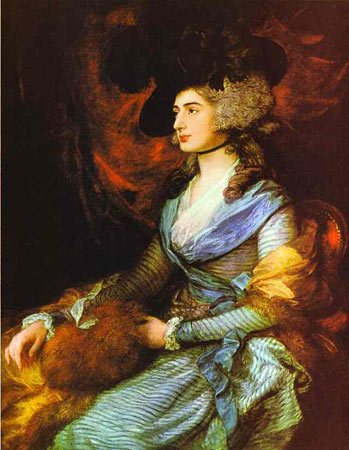
Although over two hundred years separate the work of British artists Thomas Gainsborough and Howard Hodgkin, they share one characteristic — the supreme importance of the brushstroke. Hodgkin uses it to suggest rather than to depict — a leaf, a cloud, or another element of the landscape. By extending the paint beyond the panel or canvas and onto the frame, he implies that his representation extends into and blends with the real world. Because his work is abstract, interpretation is more open, more dependent on the viewer’s perspective. Consequently, at this point in time, “In Egypt” (2007-8) becomes a reflection of contemporary events. Whereas the swirls in the center of the canvas elicit clouds, the scores of black splotches spread across the canvas conjure up images of crowds of protesters, rather than elements of the landscape.
For Gainsborough, each brushstroke represents a button, beads on a dress, or a part of something specific. The sensuous silvery dress in the portrait of “Ann Ford” (1760), the voluminous, flowing gold dress in “Mrs. Grace Dalrymple Elliot” (1778), the tilt of the head, and every surrounding detail, contribute to the sense that these are images of self-assured women. The eleven portraits in this exhibit highlight the symbiotic relationship between Gainsborough’s artistic ambitions and the subjects’ desires to attain celebrity status. They represent a transition to modernism not only in terms of painting and portraiture, but also in terms of the lifestyle of the women being portrayed.
Published courtesy of ArtSceneCal ©2011
